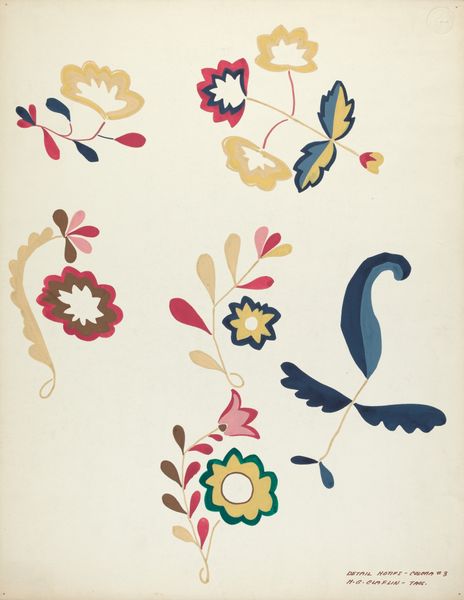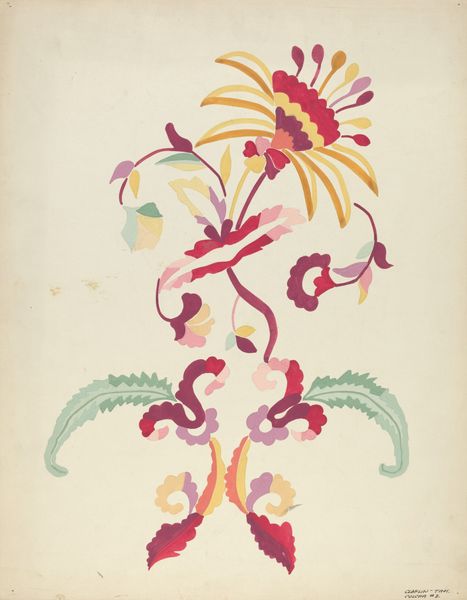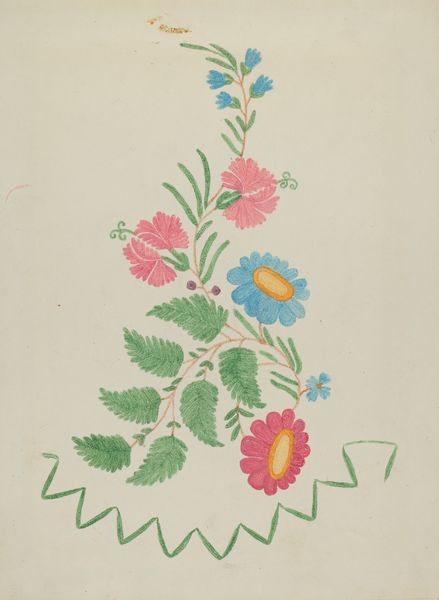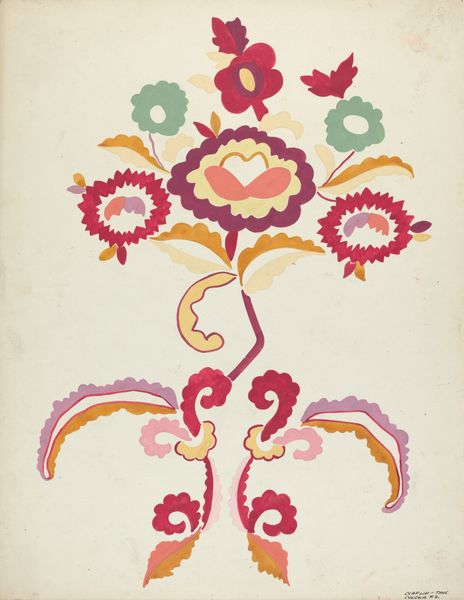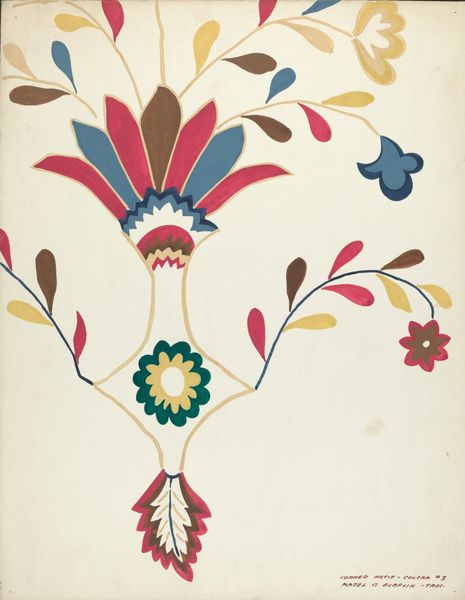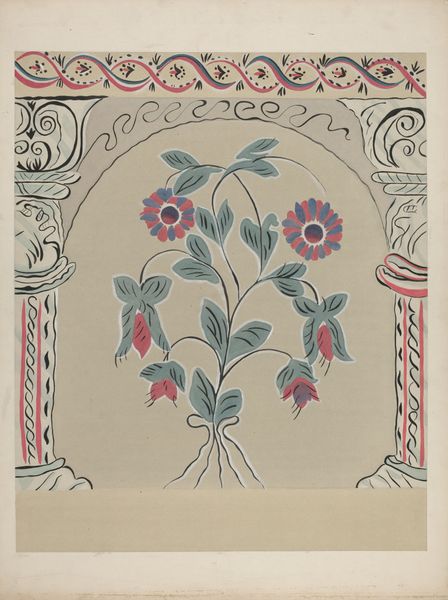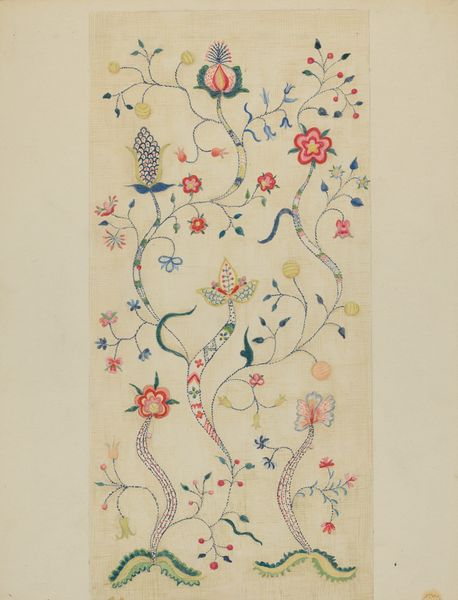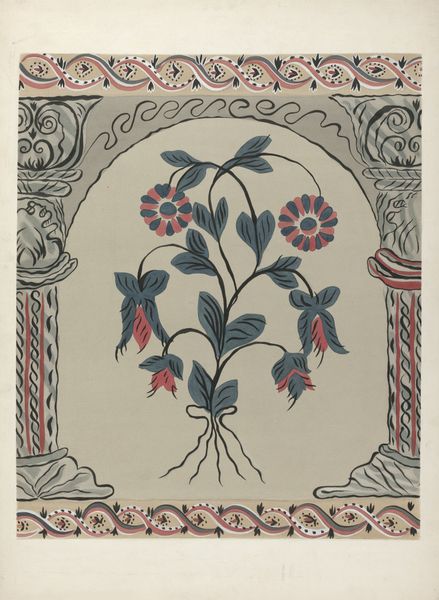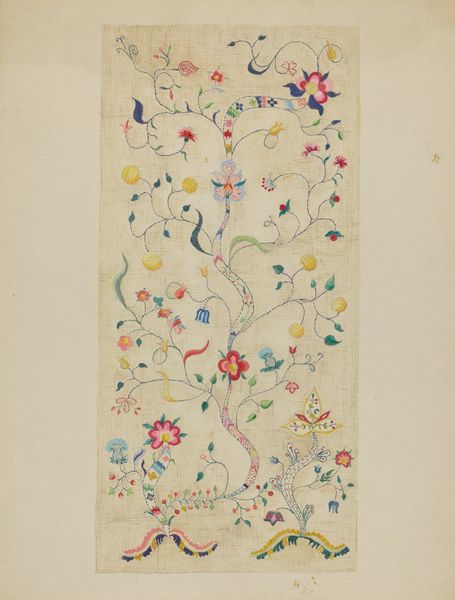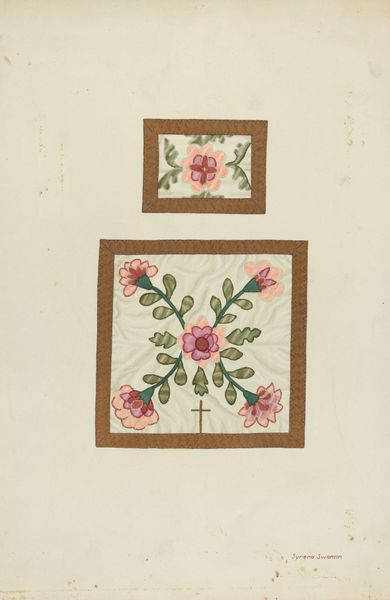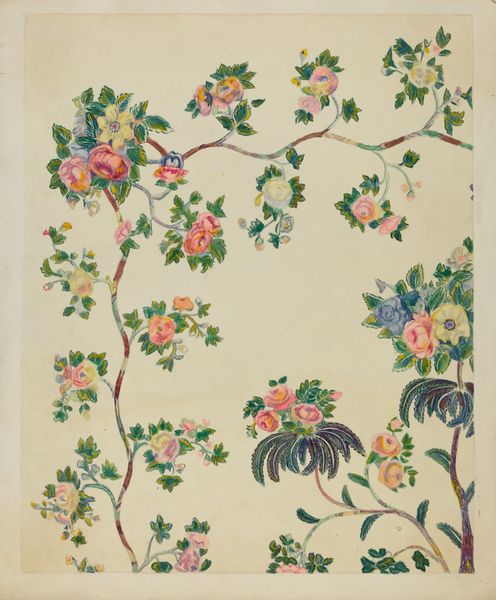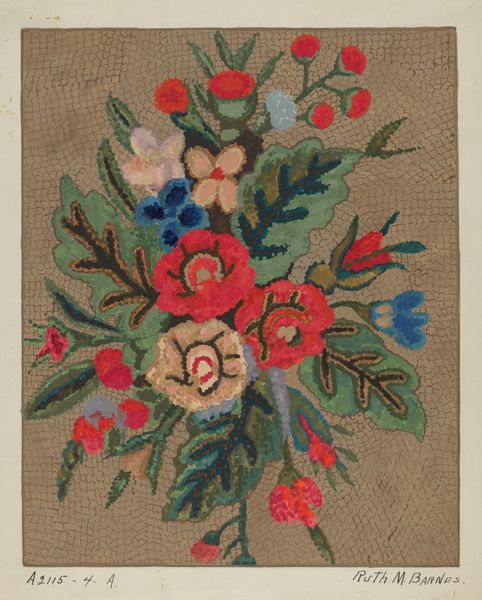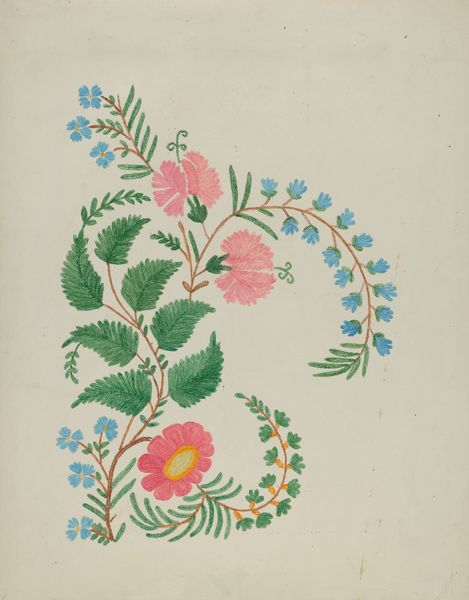
drawing, watercolor
#
drawing
#
water colours
#
watercolor
#
geometric
#
decorative-art
Dimensions: overall: 46.2 x 35.9 cm (18 3/16 x 14 1/8 in.)
Copyright: National Gallery of Art: CC0 1.0
Curator: I find the watercolor design by Majel G. Claflin, dated sometime between 1935 and 1942, quite striking. The title given is "Design from Proposed Portfolio." What is your first impression? Editor: Clean. Restrained. It feels like something mass-produced but aiming for a handmade touch. There is such intention in the simple geometric forms, yet also a bit sterile, as if lacking the soul of individually crafted motifs. Curator: As an iconographer, are these forms invoking certain traditions of symbolism or visual culture for you? Editor: Oh, absolutely. The floral motifs, despite their stylization, speak of nature's abundance, yet simplified, almost regimented. They reference folk art, perhaps Scandinavian or Eastern European textile design. The colors – the muted reds, blues, and yellows—enhance that sense of familiarity and a connection to nature’s materials, referencing natural dyes, perhaps? Curator: That's interesting, and lines up with what I see from a materialist point of view. It is all watercolor, suggesting an economy of means, probably created with an idea to be translated into woven goods or even something printed. There's an interesting tension here between the unique brushstroke and the anticipated reproducibility. Editor: It is true. Despite the design's origin, the goal feels removed from high art, aiming for the applied arts, a democratized beauty. Were the flowers originally created with stencils or maybe hand-painted, only afterward cleaned up in its final design? Curator: Very likely, but I appreciate you flagging up that ambiguity because I'm curious about the original mode of making this. It is hard to tell. It draws attention to questions about artistic labor and design as a trade. I imagine these ended up on textiles, ceramics, etc. Things intended for daily use and visual pleasure for mass consumption. Editor: Precisely. This reminds me of design patterns employed throughout time to offer common motifs—flowers of hope, in a sense, into daily existence. And it is a humble hope expressed by simplified elements. Curator: It shows us how artistry manifests in unexpected places, intertwining utility with aesthetic intent. Editor: Yes, a nice quiet meditation about how symbolic forms have come to fill functional roles.
Comments
No comments
Be the first to comment and join the conversation on the ultimate creative platform.
